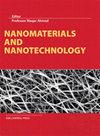Characterization and evaluation of multiple biological activities of phytosynthesized gold nanoparticles using aqueous extract of Euphorbia dendroides
IF 3.3
3区 材料科学
Q2 MATERIALS SCIENCE, MULTIDISCIPLINARY
引用次数: 0
Abstract
Novel metallic nanoparticles (NPs), such as biosynthesized gold nanoparticles (AuNPs), have been extensively studied because of their wide applications. Consequently, the present investigation aimed at the biosynthesis, characterization, and comparative assessment of biological activities of AuNPs. Biosynthesized AuNPs (ED-AuNPs) were synthesized using aqueous extract of Euphorbia dendroides (E. dendroides) aerial parts (EDAE), which functions as a reducing and stabilizing agent by its nature. Presence of tannins, saponins, flavonoids, alkaloids, glycosides/or carbohydrates, steroids, and terpenes was revealed by the qualitative phytochemical analysis of EDAE. Characterization of the biosynthesized AuNPs was attained by UV-Visible spectrophotometry, transmission electron microscopy (TEM), XRD, and Fourier transform infrared (FTIR). The cytotoxic effects of ED-AuNPs and EDAE were assessed in vitro against HepG2 and HCT-116 cancer cells. The MTT assay revealed a significant cytotoxic effect of ED-AuNPs and EDAE on HepG2 (IC50 = 41.72 ± 1.26 and 55.26 ± 2.25 μg mL−1) as well as HCT-116 (IC50 = 44.96 ± 3.23 and 69.83 ± 0.96 μg mL−1) cells, thus indicating their potential anticancer activity. Furthermore, ED-AuNPs exhibited potent anti-diabetic activity, with an IC50 value of 19.8 ± 1.97 µg mL−1, pointing to their plausible use as therapeutics in the treatment of diabetes, as well as a promising antimicrobial activity against H. pylori.树枝状大戟水提取物植物合成金纳米粒子的多种生物活性表征与评价
新型金属纳米粒子(NPs),如生物合成金纳米粒子(AuNPs),因其广泛的应用而受到广泛的研究。因此,本研究旨在研究AuNPs的生物合成、表征和生物活性的比较评估。生物合成AuNPs (ED-AuNPs)以大戟(Euphorbia dendroides, E. dendroides)气相部位(EDAE)的水提物为原料合成,具有还原性和稳定性作用。通过对EDAE的定性植物化学分析,发现其含有单宁、皂苷、黄酮类、生物碱、糖苷/或碳水化合物、类固醇和萜烯。通过紫外可见分光光度法、透射电镜(TEM)、x射线衍射(XRD)和傅里叶变换红外(FTIR)对生物合成的AuNPs进行了表征。体外评估ED-AuNPs和EDAE对HepG2和HCT-116癌细胞的细胞毒作用。MTT实验显示ED-AuNPs和EDAE对HepG2细胞(IC50分别为41.72±1.26和55.26±2.25 μg mL−1)和HCT-116细胞(IC50分别为44.96±3.23和69.83±0.96 μg mL−1)具有显著的细胞毒作用,提示其具有潜在的抗癌活性。此外,ED-AuNPs显示出强大的抗糖尿病活性,IC50值为19.8±1.97µg mL−1,表明它们可能用于糖尿病的治疗,以及对幽门螺旋杆菌的抗菌活性。
本文章由计算机程序翻译,如有差异,请以英文原文为准。
求助全文
约1分钟内获得全文
求助全文
来源期刊

Nanomaterials and Nanotechnology
NANOSCIENCE & NANOTECHNOLOGY-MATERIALS SCIENCE, MULTIDISCIPLINARY
CiteScore
7.20
自引率
21.60%
发文量
13
审稿时长
15 weeks
期刊介绍:
Nanomaterials and Nanotechnology is a JCR ranked, peer-reviewed open access journal addressed to a cross-disciplinary readership including scientists, researchers and professionals in both academia and industry with an interest in nanoscience and nanotechnology. The scope comprises (but is not limited to) the fundamental aspects and applications of nanoscience and nanotechnology
 求助内容:
求助内容: 应助结果提醒方式:
应助结果提醒方式:


